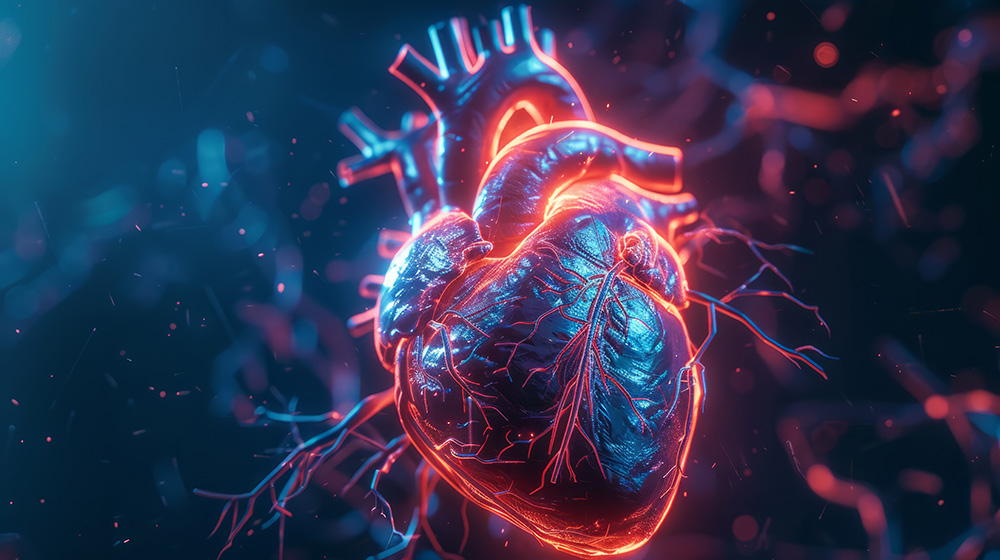Cardiogenic Shock

Cardiogenic shock (CS) is a medical disorder in which the heart suddenly stops pumping enough oxygen and blood to the rest of the body. It is a serious condition and requires immediate medical attention.
Cardiogenic shock often occurs when someone is having acute myocardial infarction (AMI), also known as a heart attack. About 5-15% of patients presenting with AMI or acute myocardial infarction will develop cardiogenic shock, with females being at a higher risk of developing CS than males. The risk of death for CS or cardiogenic shock remains high, with in-patient mortality rates between 40-60%.
The Pathophysiology of Cardiogenic Shock
Cardiogenic shock has a complex pathophysiology involving a vicious cycle. Ischemia causes myocardial dysfunction to both diastolic and systolic left ventricular function. As a result, contractility of the heart is depressed, leading to a reduced cardiac output, which further impairs contractility and coronary ischemia, leading to worse cardiogenic shock and potentially multiorgan dysfunction. It is important for medical patients presenting with cardiogenic shock to receive therapy as soon as diagnosis is made.
Cardiogenic Shock Causes
The most common cause of cardiogenic shock is a severe heart attack. While a person is experiencing a heart attack, their ventricle (most often the left ventricle) is damaged, causing the body to lose the ability to pump blood, thus sending the patient into shock.
Other Contributing Factors to Cardiogenic Shock in Addition to Heart Attack
There are a few other causes of cardiogenic shock in addition to heart attacks of patients including:
·Heart Failure or Arrhythmia
·Fluid buildup in chest, internal bleeding, pulmonary embolism
· Some medications including beta blockers or calcium channel blockers (however, this is very rare)
There are several risk factors attributed with a higher chance of developing cardiogenic shock including age, a history of heart failure or heart attack, having diabetes or high blood pressure, and being a female. Making some lifestyle changes can decrease the risk of developing cardiogenic shock, such as avoiding smoking or second-hand smoke, maintaining a healthy weight, consuming less salt, cutting back on sugar and alcohol intake, and exercising regularly.
Signs of Cardiogenic Shock
Signs of Cardiogenic Shock experienced can vary widely but typically will include the following:
· Fast breathing
· Shortness of breath
· Moist, clammy skin
· Skin that is cool to the touch
· Elevated pulse or a weak pulse
· Restlessness or agitation
· Lightheadedness
· Trouble concentrating or confusion
· Not being alert
· Blotchy skin or pale skin
· Less than normal urination (or no urination at all)
· Loss of consciousness
In addition, because cardiogenic shock is usually a result of a heart attack, patients often experience heart attack symptoms as well. These symptoms can include chest pain/pressure, shoulder and arm pain, sweating, nausea, and vomiting.
Examples of Cardiogenic Shock Manifesting in a Heart Patient
When a patient presents to the hospital in cardiogenic shock, there are several clinical signs. A patient will have severe hypotension, which is a decrease in blood pressure of less than 90/60, have cold feet and hands, and often be agitated and/or confused. Most patients presenting with cardiogenic shock will have severe shortness of breath. While most patients show obvious signs of being in shock, not all present the same.
Treatment Options for Cardiogenic Shock
When a patient presents with cardiogenic shock symptoms, doctors will run multiple tests to provide an accurate diagnosis. Once a diagnosis is confirmed, the medical team will decide the best course of treatment based on the individual as well as the stage of shock the patient is in. At first, the goal for medical treatment is to restore blood pressure levels and heart function to normal. Often, various medications will be given to patients as part of the treatment which may include vasopressin, epinephrine, dopamine. Medicines such as aspirin may be given to reduce blood clotting and vasopressors are used to constrict blood vessels. Inotropic agents, such as epinephrine and dopamine can help improve the pumping function of the heart. Some patients will also require oxygen treatment to increase the amount of O2 in their blood.
If the patient is not responding to medications for cardiogenic shock, support devices are often considered to temporarily help the pump blood into the rest of the body, while the heart is recovering. These support devices include intra-aortic balloon pump, impella heart pump, or extracorporeal membrane oxygenation (ECMO).
Once a patient is stable, longer-term health treatment is considered to address the underlying condition that caused the cardiogenic shock in the first place. Various interventions are used such as bypass surgery, coronary interventions, cardioversion, pacemakers, or ablation. If it is determined that the underlying cause of the shock was a congenital heart defect or heart failure, other more invasive cardiogenic shock treatments will need to be considered such as valve replacement, mechanical circulatory support, or heart transplantation.


